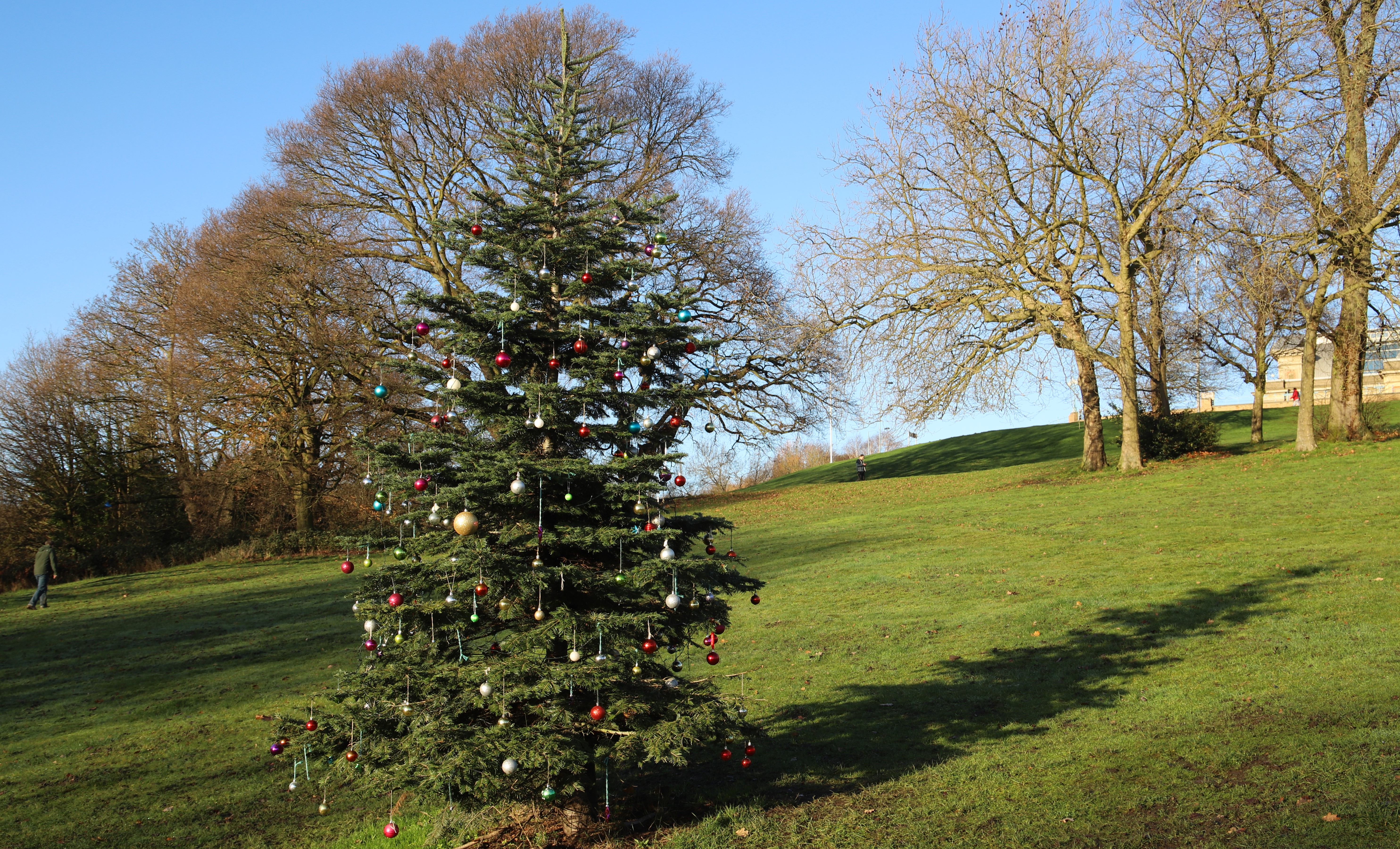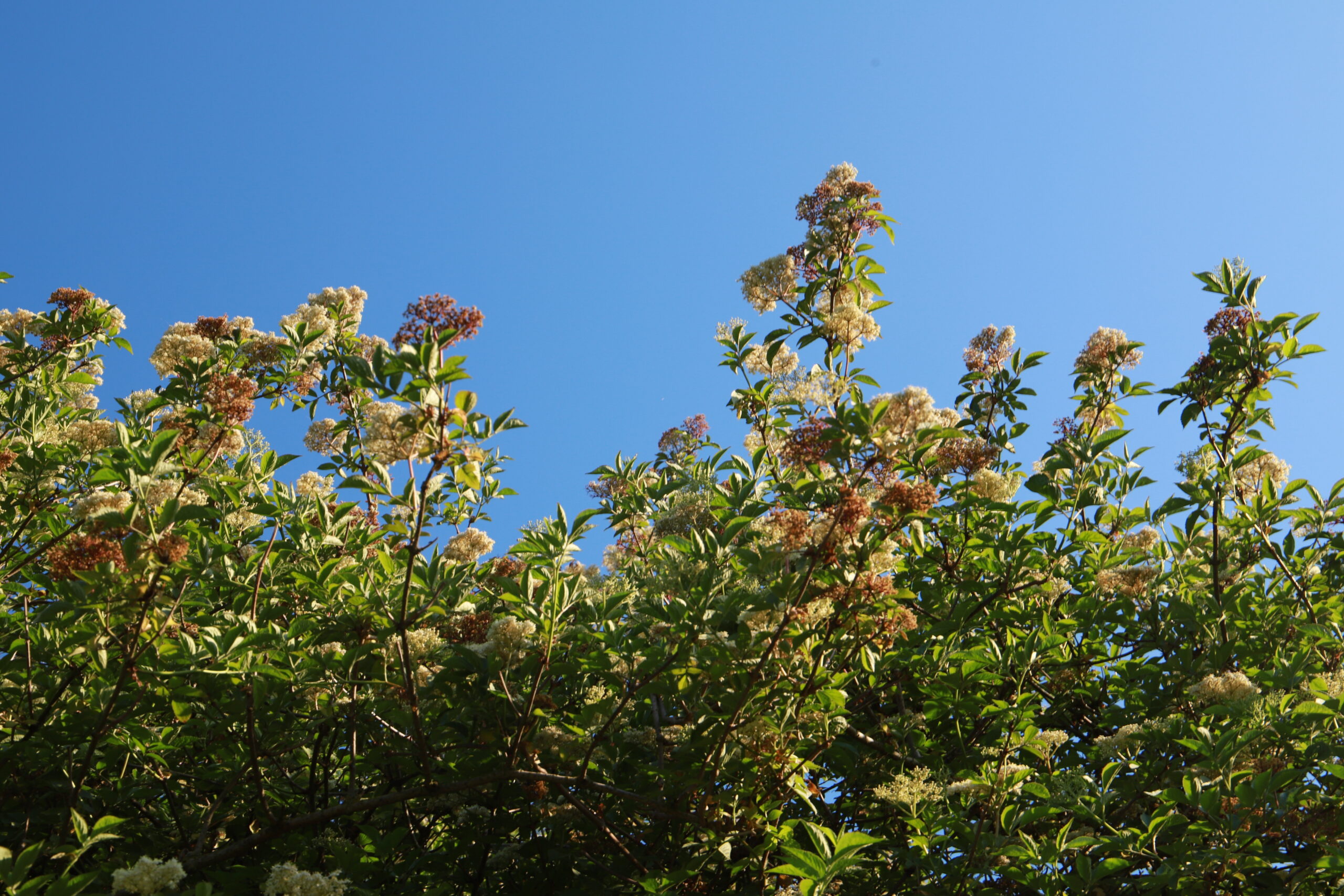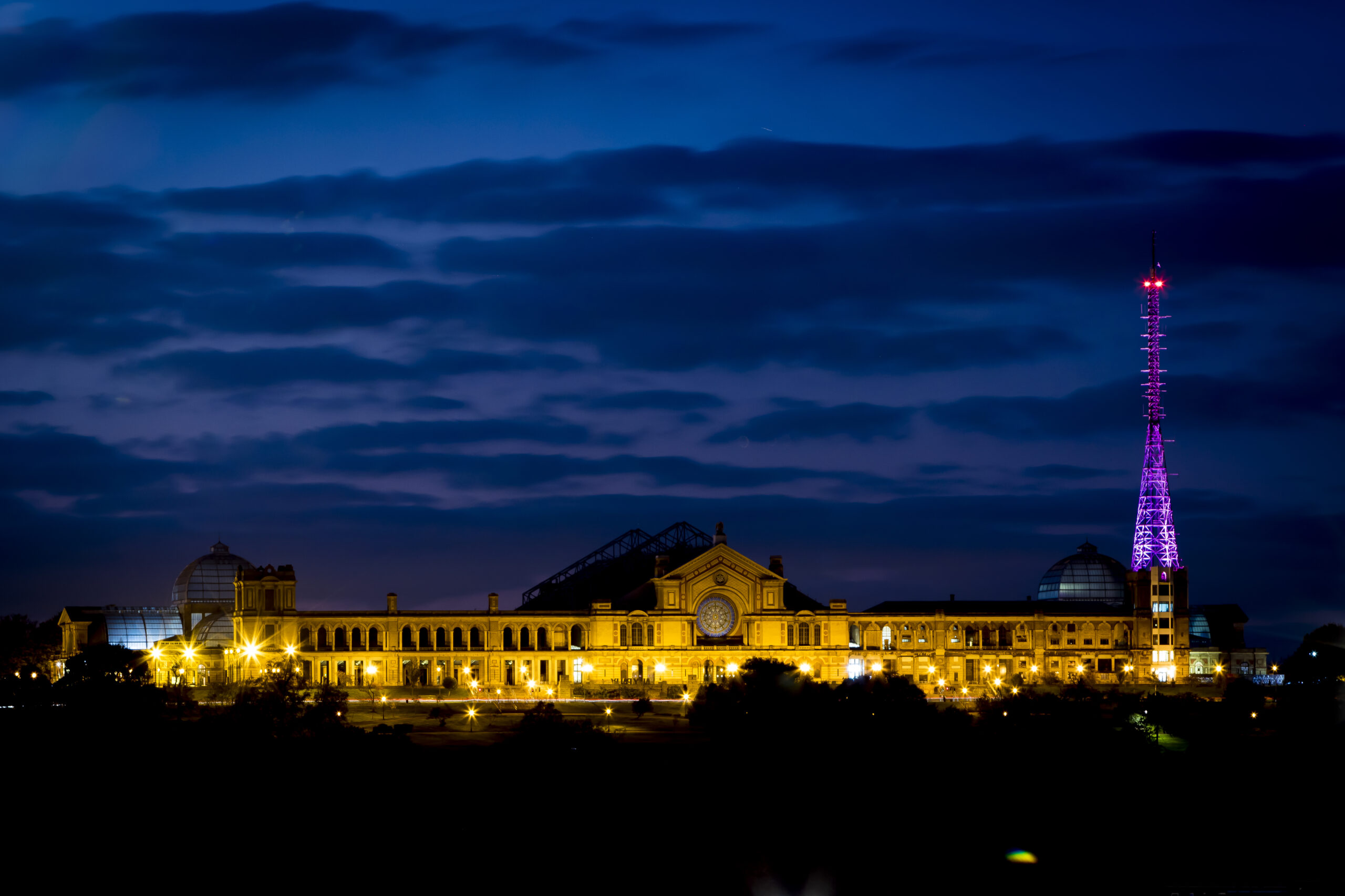Stephen Middleton from the Friends of Alexandra Park is introducing us to some of his favourites from the 7,000-plus trees across the Park. Here is his selection for December:
With Christmas coming, the Grand Fir (Abies grandis) is our festive tree of the month. Located on the South Slope below Alexandra Palace just to the right of the steep path that goes straight down, this tree has been covered with Christmas decorations over the past few years.
Fir (or Silver Fir) trees are part of the pine family of conifers which have needles as their leaves. Pines, themselves, have needles grouped in twos, threes or fives. Spruces, like firs, have single needles, but have cones that hang down from the branches and eventually fall to the ground. Firs, by contrast, have cones that grow upwards from the branch and don’t fall to the ground. The cones gradually disintegrate while still attached to the tree leaving just a central spire. Look up to near the top of the tree and you can spot the remains of this year’s cones that have mostly disintegrated.
This particular fir, Abies grandis, has a very flat arrangement of branches compared to other firs. As to the needles, like all firs they have a sucker-like attachment to the stem (unlike spruces which have a peg-like attachment). Turn over a needle and you can see two white lines. These are the stomata – small holes through which the tree breathes.
 Our tree of the month was discovered by a Scottish tree hunter, David Douglas, and brought back to this country in 1831 or 1832. In its native west coast of America grand firs can grow up to 80 metres high, but the tallest in the UK is just over 60 metres. It is only beaten in height in this country by the douglas fir. The grand fir is also fast growing and can reach up to 30 metres in just 35 years. In fact Abies, the tree’s scientific name, comes from the latin abir “to go away” referencing the fact that these trees are fast growing.
Our tree of the month was discovered by a Scottish tree hunter, David Douglas, and brought back to this country in 1831 or 1832. In its native west coast of America grand firs can grow up to 80 metres high, but the tallest in the UK is just over 60 metres. It is only beaten in height in this country by the douglas fir. The grand fir is also fast growing and can reach up to 30 metres in just 35 years. In fact Abies, the tree’s scientific name, comes from the latin abir “to go away” referencing the fact that these trees are fast growing.
The tree is a useful forestry tree due to its ability to produce a lot of wood very quickly. However, the wood is soft and not very durable so pallets and fruit boxes are typical uses for the wood as well as wood pulp for paper making. In North America they were used in canoe building.






